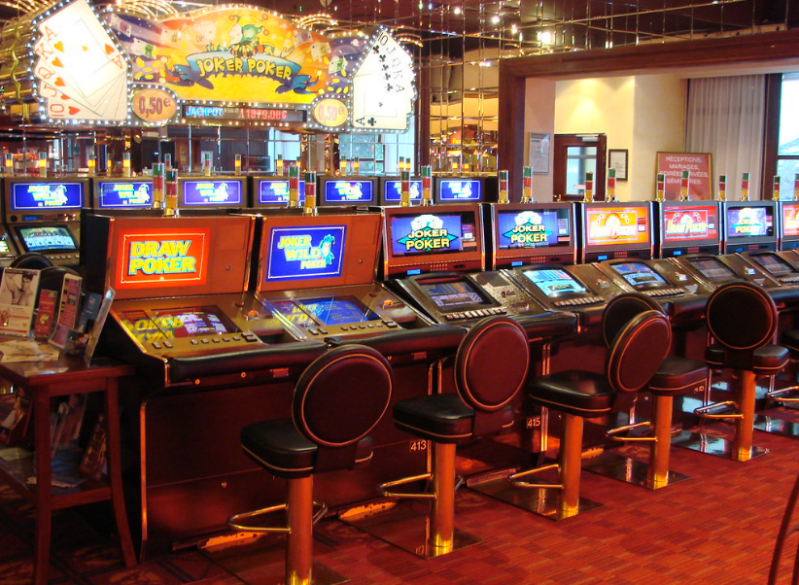
Casino games have long captured the interest of individuals around the globe, becoming an integral part of both fun and culture. From the sparkling lights of Nevada to the engaging experience of online gaming, these experiences evoke excitement, danger, and sometimes even a sense of sentimentality. They are beyond just pastimes; they have woven themselves into the fabric of society, influencing various aspects from film and melodies to fashion and literature.
The appeal of casino games surpasses the gambling aspect, tapping into wider themes of serendipity, risk, and social interaction. As players gather around a gaming table or spin the roulette, they engage in an timeless ritual that connects with our collective desire for thrill and instability. This captivation has led to the emergence of countless references in movies, tracks, and gaming, showcasing how intensely entrenched these games are in popular culture. Whether it is the pressure of a traditional robbery film or the colorful nightlife portrayed in recordings, casino games have established a substantial niche that reflects our bond with risk and reward.
Cultural Impact of Casino Games
Casino activities have played a pivotal role in cultural contexts throughout the ages. Stemming from old societies, games of chance were often linked to ceremonies or events. For example, early forms of gambling can be traced back to historic Chinese and the Romans, where die games and betting on outcomes were popular pastimes. These activities not only served as entertainment but also as methods of social interaction, facilitating relationships among individuals within societies.
As societies evolved, so did the sophistication and structure of gambling games. The creation of formal casinos in the 17th century, particularly in Italy, marked a significant shift in how games were viewed and organized. With designated spaces for gaming, the casino became a community center where patrons from various backgrounds gathered. This evolution contributed to the validation of gambling, transforming it from a mere pastime into an organized industry that shaped the economy and regulations.
The impact of casino activities on mainstream culture cannot be overlooked. As they were brought into the limelight in books and film, games such as Texas Hold’em and 21 became symbols of risk, luck, and tactics. Iconic figures and stories have emerged around these games, reflecting societal views towards fortune, wealth, and immorality. This interest with casino games has infiltrated various forms of media, cementing their status in the public imagination and connecting them to broader cultural narratives throughout the ages.
Representation of Gambling Activities in Media
Casino activities have long been a popular theme in various forms of media, reflecting both the thrill and complexities of gambling culture. Movies such as Ocean’s Eleven and Casino Royale portray individuals who navigate intense situations, showcasing not only the attractiveness of the gambling environment but also the methods and choices that come with playing popular games like poker and blackjack. These films often dramatize the thrill of winning and the potential consequences of losing, encapsulating the perils involved in betting.
Television shows have also explored the realm of gambling activities, often integrating them into the plot as a setting for character arcs and conflict. Series like Las Vegas depict the stories of casino workers and customers, highlighting the lively, often tumultuous energy of the casino floor. Reality shows featuring intense betting contests further emphasize the attraction of gambling activities, drawing viewers into the drama and strategy involved in each session. Through these depictions, media not only amuses but also sparks conversations about fortune, skill, and the character of randomness.
Digital games have increasingly included gambling activities into their structure, allowing players to experience the thrill of betting without financial risk. Titles within the landscape of digital gaming often include online slot machines, poker, and other casino favorites, creating an immersive gameplay that mirrors real-life gameplay. These virtual portrayals make casino games accessible to a broad demographic, appealing to both players who indulge and those who enjoy the thrill of virtual experiences. As a consequence, the portrayal of casino games in media continues to shape cultural attitudes and cultural significance, highlighting their place in society and culture.
Effect of Gambling Activities on Communities
Gambling activities have a meaningful impact on communities, affecting various aspects of societal norms and interpersonal behavior. ww88 They often serve as a venue for community engagement, where people gather to enjoy a common experience. Casino trips with friends or visits to casinos become social activities that foster connections and create memories. This communal aspect boosts the entertainment value of casino games, making them a popular choice for celebrations and recreational pursuits.
Additionally, casino games have been portrayed in countless films, TV series, and written works, shaping views and attitudes towards gaming and gaming. Icons like James Bond competing in baccarat or the high-stakes poker scenes in films have cemented these games in the shared imagination. This representation often idealizes the lifestyle associated with gambling, attracting new players and influencing trends in both fashion and conduct. These portrayals can ignite curiosity and lead to a deeper investigation of the intricacies of gaming.
However, there are also adverse implications linked to the popularity of casino games. The allure of quick monetary gain can lead to problem gambling and economic troubles for some people. The community must contend with these consequences, advocating for responsible gambling and education of the dangers involved. Finding a balance between the entertainment value of casino games with the potential for harm is crucial to ensure that they continue to be a beneficial aspect of our cultural landscape.

